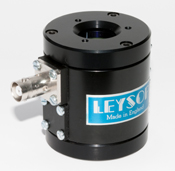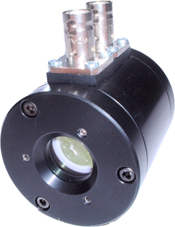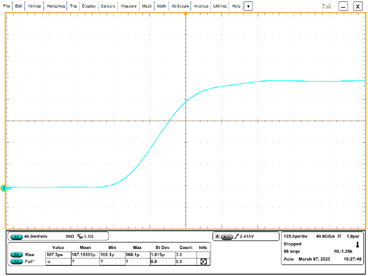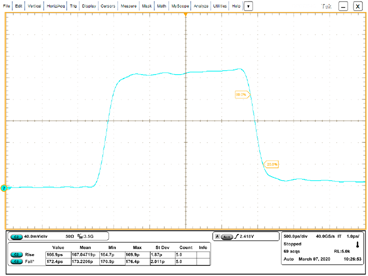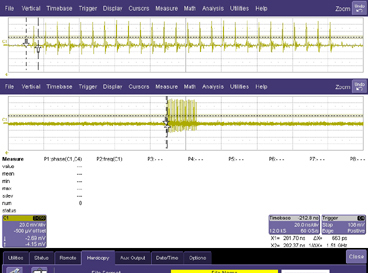Ultra-Fast KD*P Pockels cells
KD*P Pockels cells with ps transition times for pulse slicing & Pulse-Picking
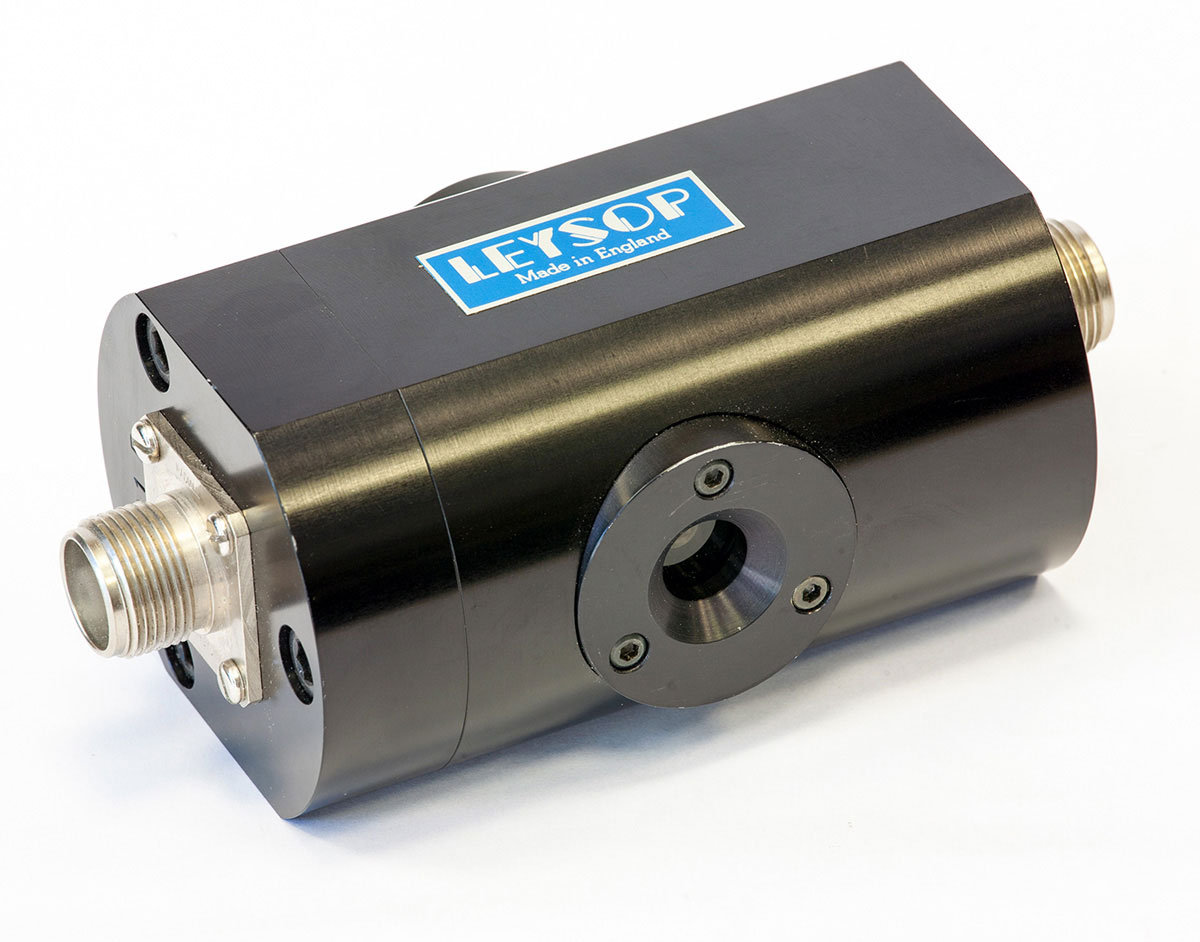
Background
For most normal applications such as Q-switching and laser beam modulation, the standard EM500 and EM500M ranges of longitudinal Pockels cells are very adequate. Rise-times achieveable with these devices can be easily obtained in the range of 500ps and upward with suitable electrical drive waveforms. In fact in most systems, the rise time of the electrical pulse generator into the load capacitance of the cell is the dominant factor and typical risetimes are thus of the order of 3 to 5ns.For some applications however, the shortest possible risetimes are required and this is where our UPC design excels. For pulse picking (that is selecting one or more adjacent pulses from a high repetition rate train of pulses, especially from a mode locked laser), the rise time requirements are usually based on generating a time gate of a few ns duration, so ~ns rise and fall times are adequate. However, with mode-locked sources often delivering pulse trains of greater than 100MHz repetition frequency shorter time windows are increasingly becoming more common.
For pulse slicing applications, the requirements are more stringent still. Not only are often very short (sub ns) pulses desired, but also the temporal shape of the optical pulse produced must be very clean with no overshot or ringing of the waveform. This requires a Pockels cell which is electrically well matched to the electrical driver source impedance across a wide frequency range. The capacitance of the Pockels cell is then of less importance as transmission line techniques must be used throughout the electrical system.
So what makes the UPC different from other Pockels cells? Well firstly, as mentioned above, the electrical parameters of the cell are matched to a 50Ω impedance as is to be expected to be found on most ultra-fast rise time drivers. This ensures that the waveform suffers no distortions due to electrical mis-match and cable reflections which could re-open the cell after a short time delay are minimised. Most Pockels cells which use a 50Ω r.f. type connector for the electrical interface are really only using this type of connector for the convenience (and often safety) which this imparts. For example, our EM500 series Pockels cells use HV BNC connectors which are rated at in excess of 10kV for continuous duty. The internal connections however present slightly too great a series inductance to truly match to 50Ω. That is not to say that for normal Q-switching duty the response is in any way detrimented by the electrical interface, only that when used for ultra-fast switching applications it is possible to resolve internal reflections on the sub-ns time-scale.
The solution used in our UPC is to use a specially shaped electrode and matched body internal diameter to maintain the impedance as the small input electrical connection is enlarged to interface to the ring electrode of the KD*P crystal. By using this method, a clean electrical interface is presented to the driving circuit and internal reflections are minimised.
It is not however adequate to just ensure that the electrical pulse enters (and exits) the cell quickly. The dielectric constant of KD*P is very high (~50) and so the propagation of the electrical wavefront across the optical aperture is in practice relatively "slow". Therefore there is a direct conflict between the requirements of fast switching and a large aperture and it is not possible to obtain ultra fast switching in large aperture cells. The UPC still provides a moderately large aperture of approximately 5mm which is obtained by use of a 6mm diameter crystal. This provides a good balance with rise-time which has been measured at <150ps by one of our customers in a "real world" application.
Being made from KD*P, the Pockels cell has excellent transparency over the wavelength range of 0.3-1.2µm and thus is useable with almost all the most important lasers from the UV to the near infra-red. Of particular importance is the region centred at 800nm for use with Ti:Sapphire lasers. Obviously, as wavelengths increase, the voltage required for switching increases linearly and the driver power requirement therefore increases as the square of the wavelength. The cost of high voltage drivers scale at a very similar rate in practice, so techniques to reduce drive voltage are important to reduce system costs. One technique in common usage is to pass the laser beam through the cell twice, thus only requiring a quarter wave switching voltage instead of a half wave. There are obvious limitations to this technique for ultra-short pulse generation, but it may still be useful for pulse picking. A more generally useful approach uses a Pockels cell with two KD*P crystal mounted optically in series, but electrically in parallel such that each crystal only needs to operate to the quarter wave potential (around 3.6kV at 1064nm). Considering the difficulty of generating fast rise-time electrical drive waveforms, it is especially beneficial that the voltage requirements be minimised and therefore the UPC is available in both single and double crystal versions.
For uses and applications of Pockels cells like the UPC, look at the Application Note above then give us a call to discuss your requirements.
Applications
Pulse slicing is probably the most obvious application area for the UPC type Pockels cells. In many cases it is desired to start with a pulse from a laser which is generated with low noise and a narrow spectrum. Such pulses are often many ns duration because of the way that the Q-switched oscillators are configured. The UPC when placed between crossed polarizers can reduce the optical pulse length easily down to a few hundred ps, retaining the peak power of the pulse. When subsequently amplified the result is a pulse of duration which would be difficult to produce by any other means such as Q-switching or cavity dumping, but much longer than mode-locked lasers would produce.
Another strong application are for the UPC is in pulse picking from ultra-high frequency mode-locked sources. We have demostrated for example selection of a single pulse or contiguous group of up to 210 pulses from a 1.5GHz laser oscillator for testing of photocathode generation of electron pulses for e-beam particle accelerators. As the optical pulse are separated by only ~667ps, a very short optical gate has to be generated by the Pockels cell and its ~200ps response makes this easy.
The other application area in which the UPC has proven to be extremely helpful is in removal of pre-pulse and ASE artifacts from pre-amplified fs laser pulse trains prior to injection into multi-pass amplifiers for extreme amplifcation to TW and PW levels. Usually the cell is placed after the first or second amplifier (typically a regenerative type) where joule level pulses are available but these often have spurious signals between 1 to 3ns before and after the main optical pulses along with a pedestal of noise. If left in place, these artifacts will be preferentially amplified by the non-linear gain process in the amplifier and apart from diverting away energy from the pump, the signals can reach high energies which will produce unwanted heating of the target prior to the main pulse arrival. This degrades the quality of the high energy experiment. For any applications you might have in mind, please give us a call to discuss your requirements, if it can be done, we can do it!
